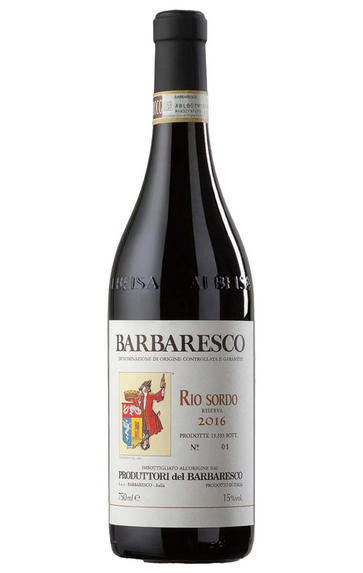
2016 Barbaresco, Rio Sordo, Riserva, Produttori del Barbaresco, Piedmont, Italy
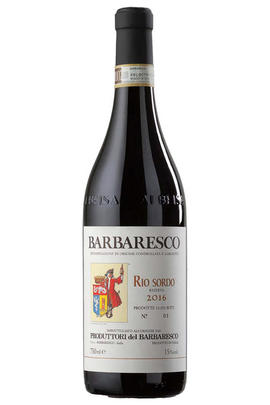
Critics reviews
The 2016 Barbaresco Riserva Rio Sordo is a serious, somber wine. Black cherry, plum, lavender, spice and menthol show off the darker side of Nebbiolo to great effect. In most vintages, Rio Sordo is an easygoing wine, but not in 2016. Readers will find a potent, brooding yet mid-weight Barbaresco that screams with character.
Drink 2021 - 2036
Antonio Galloni, Vinous.com (October 2020)
Production is 11,355 bottles.
The 2016 Barbaresco Riserva Rio Sordo takes it up a notch if you consider the tasting of each one of these single-vineyard wines tasted in order. With the Rio Sordo, you really start to feel the textural richness and fruit weight that can be achieved with Nebbiolo in a great vintage. This vintage is compact and tightly woven together, suggesting a forecast for an extra long drinking window. The Alutto and Marengo families farm the fruit used in this blend. This wine will live long, and I love that touch of candied licorice that appears on the close (especially when you come back to the open bottle 24 hours later).
Drink 2025 - 2050
Monica Larner, Wine Advocate (June 2021)
About this WINE
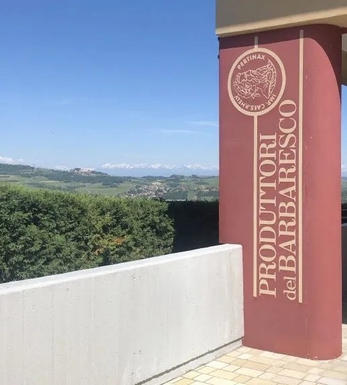
Produttori del Barbaresco
Produttori del Barbaresco is located in the Barbaresco region of Piedmont, Italy. It is a cooperative winery established in 1958 by a group of 19 growers who recognised the potential of the Barbaresco region and decided to join forces. It has grown to include over 50 members who collectively cultivate approximately 100 hectares of vineyards.
The cooperative owns vineyards in different cru sites, including Asili, Montefico, Montestefano, Ovello, Pajè, Pora, Rabajà, Rio Sordo, and Muncagota. These vineyards are known for their distinct terroirs and contribute to the complexity and character of the wines.
The primary grape variety used by Produttori del Barbaresco is Nebbiolo, indigenous to the Piedmont region. Nebbiolo produces wines with intense aromatics, high acidity, and firm tannins. The cooperative also has a small amount of Barbera and Dolcetto wines.
Produttori del Barbaresco focuses on traditional winemaking practices to preserve the authenticity and character of the Nebbiolo grape. The wines are fermented in large oak casks and undergo extended maceration to extract colour, flavour, and tannins. Ageing takes place in large Slavonian oak barrels for an extended period, allowing the wines to develop complexity and refinement.
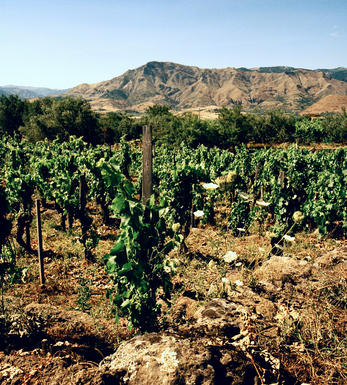
Barbaresco
The Piedmontese DOCG zone of Barbaresco is responsible for producing some of Italy’s finest wines. It occupies the same region and uses the same grape (Nebbiolo) as its bigger brother Barolo, but is a third of the size (only 640 hectares versus Barolo’s 1,700 hectares). It is also 50 years younger than Barolo, having produced wine labelled Barbaresco since 1890.
Barbaresco earned its DOCG after Barolo in 1980, largely thanks to the efforts of Angelo Gaja. The soils are lighter here than in Barolo – both in colour and weight – and more calcareous. The slopes are also less favourably situated and (relatively speaking) yield earlier-maturing yet extremely elegant wines that require less oak ageing (normally one year in oak plus six months in bottle). The appellation’s key districts are Barbaresco, Treiso, Neive and Alba.
Recommended producers: Cigliuti, Gaja, Marchesi di Gresy
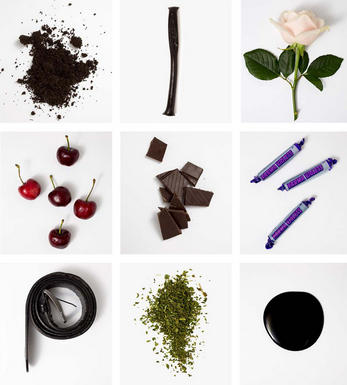
Nebbiolo
Nebbiolo is the grape behind the Barolo and Barbaresco wines and is hardly ever seen outside the confines of Piedmont. It takes its name from "nebbia" which is Italian for fog, a frequent phenomenon in the region.
A notoriously pernickety grape, it requires sheltered south-facing sites and performs best on the well-drained calcareous marls to the north and south of Alba in the DOCG zones of Barbaresco and Barolo.
Langhe Nebbiolo is effectively the ‘second wine’ of Piedmont’s great Barolo & Barbarescos. This DOC is the only way Langhe producers can declassify their Barolo or Barbaresco fruit or wines to make an early-drinking style. Unlike Nebbiolo d’Alba, Langhe Nebbiolo can be cut with 15% other red indigenous varieties, such as Barbera or Dolcetto.
Nebbiolo flowers early and ripens late, so a long hang time, producing high levels of sugar, acidity and tannins; the challenge being to harvest the fruit with these three elements ripe and in balance. The best Barolos and Barbarescos are perfumed with aromas of tar, rose, mint, chocolate, liquorice and truffles. They age brilliantly and the very best need ten years to show at their best.


Buying options
Add to wishlist
Description
Production is 11,355 bottles.
The 2016 Barbaresco Riserva Rio Sordo takes it up a notch if you consider the tasting of each one of these single-vineyard wines tasted in order. With the Rio Sordo, you really start to feel the textural richness and fruit weight that can be achieved with Nebbiolo in a great vintage. This vintage is compact and tightly woven together, suggesting a forecast for an extra long drinking window. The Alutto and Marengo families farm the fruit used in this blend. This wine will live long, and I love that touch of candied licorice that appears on the close (especially when you come back to the open bottle 24 hours later).
Drink 2025 - 2050
Monica Larner, Wine Advocate (June 2021)
wine at a glance
Delivery and quality guarantee